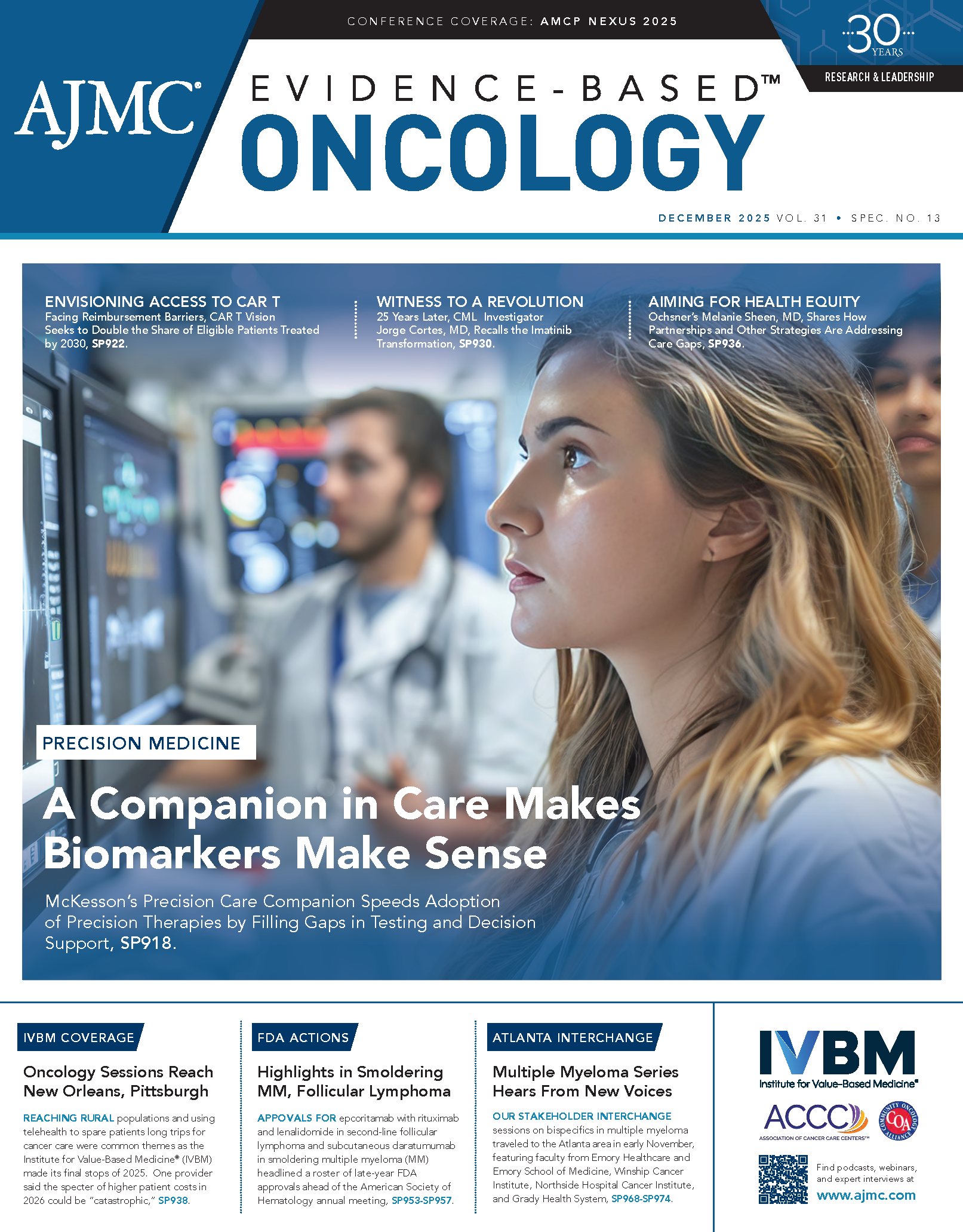- Center on Health Equity & Access
- Clinical
- Health Care Cost
- Health Care Delivery
- Insurance
- Policy
- Technology
- Value-Based Care
Improving Cancer Care Equity in Louisiana: Melanie Sheen, MD
Ochsner MD Anderson expands cancer care access in Louisiana through community partnerships, technology, and strong patient-physician relationships.
Ochsner Health, in partnership with MD Anderson, has established multiple cancer centers throughout the state of Louisiana, aiming to improve patient access to cancer treatments. The collaboration has increased diverse clinical trial enrollments and engaged community partners to spread awareness of preventative health care services.
At an Institute for Value-Based Medicine® event in New Orleans, Louisiana, on November 4, Ochsner MD Anderson hematology and oncology specialists discussed national barriers to quality health care services and clinical trial enrollment, and how Ochsner maintains a diverse population in clinical trials. Aside from Medicaid expansion, Ochsner has increased community engagement through partnerships with physicians in smaller, rural communities, said Melanie Sheen, MD, a hematology and oncology specialist at Ochsner MD Anderson.
“Partnership and community among physicians allow for partnership and community for the patients so that patients have access to that knowledge,” Sheen said.
Although the expansion has helped patients access health care services that were once unattainable without it, Sheen says their outreach into the community has also helped spread awareness of clinical trials and preventative health care measures. These include addressing patient risks, encouraging them to seek their family medical history, and making them aware of any necessary screenings given their lineage.
Furthermore, technological advances have also helped Sheen specifically monitor patients with breast cancer undergoing chemotherapy. The digital patient monitoring tool called Chemo Care Companion has relieved the burden of in-person emergency visits should the patient need immediate care. Primarily managed by nurse practitioners, Sheen said, it also helps provide better care for patients and continues to lay the foundation for solid patient-physician relationships.
“There's a big movement across the country in building better relationships with patients,” she said. “Over time, the more trust we build with our patients, the more enrollment in clinical trials and diverse enrollment in clinical trials will improve.”
This transcript has been lightly edited. Captions are auto-generated.
Transcript
What strategies have proven most effective in addressing disparities in early breast cancer detection and timely initiation of treatment?
One of the biggest benefits for us in Louisiana was Medicaid expansion. Medicaid expansion has allowed people who may not have been eligible before for early screening or just standard-of-care screening because of insurance issues to now be able to have that access, and this has been something that we've had for a while now with Medicaid expansion. It allows more patients to have access to mammograms and to have access to primary care doctors or ob-gyns in the world of breast cancer, where a patient may feel something, and instead of delaying their care because they don't have insurance, Medicaid expansion has allowed more people to have that health insurance.
Also, one of the things that we've been able to do in the community is partner with community programs, for lack of a better term. Those community partnerships get out into the community and talk to women about their risks, understanding their family history, so that they can become more aware of things like high-risk screening and early detection, where someone who may not be as informed about their family history may not bring that to their gynecologist. That partnership and that knowledge within the community help improve early detection.
From a diverse patient standpoint, Ochsner has a commitment to healthy Louisiana and has clinics and partners throughout rural spaces. Again, most of our patients who are getting cancer care across the country aren't at big academic centers in big cities, and so having physicians, nurse practitioners, and physician assistants in the community who have that base of knowledge to talk to patients about their family history or talk to patients about if they feel something abnormal and to get that checked out really helps to lower that barrier to care in diverse communities as well.
How do you see digital health tools or remote monitoring complementing traditional oncology care and supporting patients through active treatment and survivorship?
I'm very happy that you asked this question. We have a great tool that we call Chemo Care Companion, and it is a digital monitoring [tool] for our patients on chemotherapy. I like to describe it to my patients as having a nurse in your pocket every day. With this technology, with this digital tool, patients are alerted to check their temperature, their blood pressure, and their weight every single day, and it’s remotely logged in. [Also], they answer a survey about their symptoms: “Are you having any new symptoms today?” And if the answer is yes, it opens up a whole new page where patients can log their symptoms and even request to be seen that day based on those symptoms.
Our nurse practitioners monitor this every day, and if they notice a trend, say, someone's weight is rapidly decreasing, or someone's blood pressure has been really low the last couple days, our nurse practitioners will call the patient and inquire, even if they say, “Oh, I'm not having any symptoms,” [they’ll] say, “Look, your blood pressure has been really low. Are you feeling a little dizzy? Are you feeling a little run down?” And we've been able to transition that into preventing people from going to the emergency room and being admitted. This is a fantastic digital monitoring tool that we are able to reduce patient burden by having that immediate access to our nurses and having that digital log, so we're able to care for patients on a whole new level.

